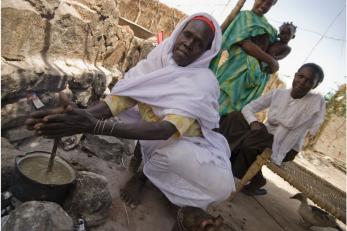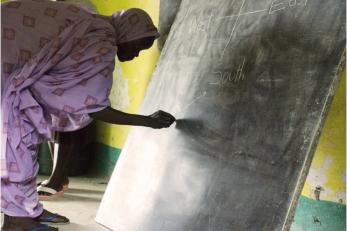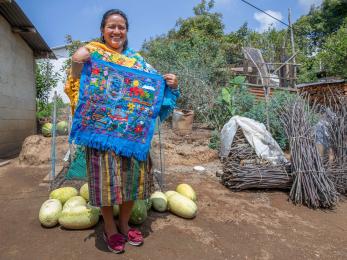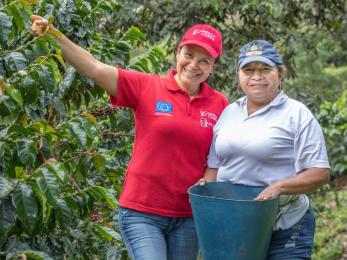Development through the lens of gender

There’s an inescapable fact about being human that is often easy to take for granted: Whenever people are involved, gender is involved. While we strive to make sure equal opportunities are available to all, regardless of gender, there are differences that must not be forgotten.
The term “gender” refers to the socially constructed roles and responsibilities that all people — women and men, girls and boys — play in a society. Gender-based disparity contributes significantly to cycles of poverty and hampers economic progress around the world. Even so, the international development community has been slow to recognize the degree that differing needs, restrictions, and cultural roles influence people's access to resources and life-changing opportunities.
Our new initiative, ACTing for Impact, will address this concern throughout all of our programs in more than 40 countries. Over the next two years, ACT will provide Mercy Corps staff with the tools, technical support and skills they need to design and fine-tune development projects that reflect gender needs, ultimately improving our work’s long-term impact.
Small changes make big impact

Experience has proven that even small changes to address gender-specific needs can have a big impact on program outcomes. During an education project in Sudan, for example, Mercy Corps team members noticed that women were not participating in teacher trainings. Why? It turns out the timing of the trainings conflicted with household chores, and the far location required that women travel after dark, which was not customary in the community.
As a result, the Mercy Corps team scheduled the training for an earlier time and moved it to a less remote location. The female teachers’ attendance was increased still further by providing onsite childcare. By successfully meeting the women’s needs, the team was able to offer more teachers the opportunity to increase their skills, and to give Sudanese girls the chance to see women as role models in the classroom.
While “gender” is not just another word for women, it is true that women and girls make up a majority of poor and marginalized groups around the world. 70% of the billion poorest people on our planet are female. 72% of the world's 33 million refugees are female. 76% of children who have never been to school, or are currently out of school, are female. The facts make it clear that much of our work around gender must address women in particular.
Developing a new strategy
In August 2011, the Feinstein International Center at Tufts University advised the global community that in order to meet the needs of the most vulnerable members of society they “…must collect information based on sex and age. When this data is lacking, it limits the effectiveness of humanitarian response in all phases of a crisis.”
When Mercy Corps’ 40-member internal Gender Working Group began looking into the agency’s effectiveness in this regard last year, what they found was startling. Despite the agency having invested in gender programming for several years, only 30% of participating Mercy Corps field staff were consistently collecting sex and age data and using it to improve their program design and implementation.
Thanks to a generous grant from Mercy Corps board member Melissa Waggener Zorkin, Kristo Zorkin and the global communications firm Waggener Edstrom Worldwide, Mercy Corps has been able to fund the three-year ACTing for Impact initiative to factor gender into all of our programming worldwide. The first task ACT completed was to integrate gender into our data collection tools and provide guides to our teams on why collecting sex and age disaggregated data is a vital part of our work.
Over the next year, Mercy Corps will begin conducting country by country training and assessments in Pakistan, Yemen, Indonesia, Guatemala and Zimbabwe — we chose country’s in each of our geographic regions that were in a strong position to take on this initial pilot phase. The goal is to find examples of what is working well, and where there is room for improvement.
In years two and three, Mercy Corps will create gender integration guides for specific sectors (such as agriculture, emergency response and, economic development) that detail best practices that can be applied across teams and countries. This information will also be made more widely available for the benefit of the international development community.
To create secure, productive and just communities, the evidence clearly shows that the entire community needs to be engaged. When women earn an income, they spend 90% of it on their families, including buying more nutritious food, school fees and health care. The more that women and girls become active participants in their societies, the better we will be able to close inequality gaps and ensure that economic growth benefits everyone. Mercy Corps won’t let this opportunity pass by.


